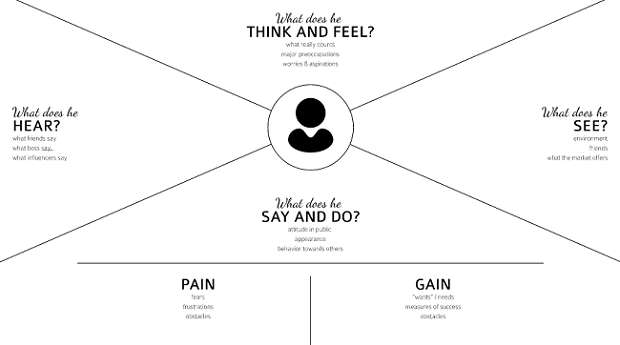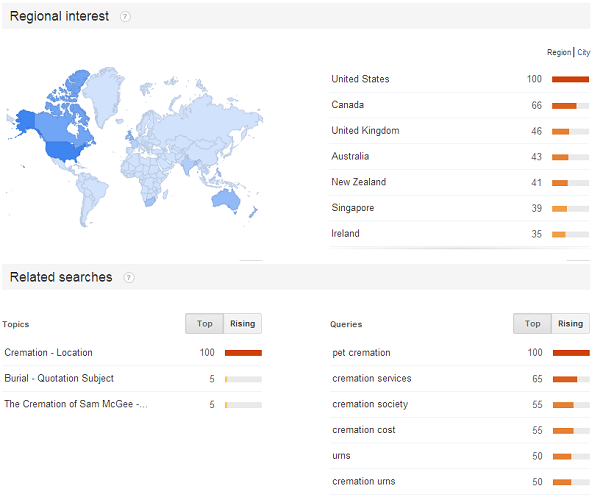7 Tools To Help You Better Understand Your Families
September 10th, 2014
One of the biggest weaknesses in funeral service, to me, is our lack of understanding of our customers.
Sure, there is research out there, but surely not enough. And until we do start to invest more time and money into research, we’re going to continue missing the boat on some big opportunities for each of our individual businesses and the profession as a whole.
To help close this gap, I’ve put together a list of tools that will help you get to know your families better in weeks, days, or heck, even hours.
Check out these 7 awesome research tools below:
1. Buyer personas


If you’re even the slightest bit interested in getting to know your families, a buyer persona will be the foundation of all of your consumer research. In a article we recently published, One Simple Trick To Truly Understand Your Families, we defined buyer personas as “fictional representations of your funeral home’s ideal customers. They’re based on real information about potential families’ demographics and behavior, along with educated speculation about their motivations, concerns, and goals.”
Your buyer persona will lay out the structure for all of the information you find using the tools I’ve shared below. Give that article on buyer personas a good read before you do anything else. It will lay out the foundation for all of the other tools we talk about below.
2. Google Analytics


Once you’ve laid out the foundation of your consumer research with your buyer persona, Google Analytics is a fantastic (free) way to start filling in all the blanks. It offers up great information about your website visitors (and their behavior) like:
Not only is it an awesome resource for general consumer research, but it’s also a great way to keep track of your marketing efforts (ie. your blog, social media, etc.). In fact, since I launched the funeralOne blog nearly four years ago, Google Analytics has been an integral part of my audience insight. I use it so much because it helps me see what blog posts are read and shared the most. If you’re interested in learning how to use Google Analytics, Google has a beginner’s training guide to get you started.
3. Social media
If you want the perfect tool that allows you to ask questions, join conversations, research, spot trends and learn the language of your families, social media is it. I regularly use Facebook to ask my customers about new products, find out what they want to read about on my blog, learn about what interests them and makes them laugh, and understand what types of content they like the best. Your funeral home’s Facebook page or Twitter profile aren’t just for posting memes and obituaries – you can use them to ask your customers just about anything… and to research them, too. Here’s a great article from the folks over at Marketing Land on using social media for research.
4. Keyword research
At its core, keyword research is all about finding the words and phrases your potential families use when they’re searching for a funeral home online. And before you get scared off by the term, know that it isn’t as intimidating as it sounds. You can easily do keyword research without the help of an SEO or marketing professional, thanks to tools like Google’s Keyword Planner and Google Webmaster Tools (both which are free). If you’re a beginner to keyword research, this guide by Copyblogger is by far the best guide to SEO I’ve seen in a long time, so be sure to check it out if you’re interested in keyword research.
5. Books, blogs, magazines
“One hour a day, read. Read about everything in the world. Read junk. Very much junk. Read so that anything that interests you will stick in your memory. Just read, just read, just read… There is your audience. There is the language. There are the words that they use.”
– Eugene Schwartz
Want to know the best way to get into the minds of your target audience? Read what they read. By reading the magazines, blogs and websites that they read everyday, you’ll be able to grasp a solid understanding of their language, thought process, and things that make them tick. But first, you need to figure out what exactly they are reading. In order to do this, you’ll need to create the buyer persona we mentioned above in the first point. Once you do that, you’ll better understand what they read, both online and offline. Challenge yourself to read at least one article or a chapter out of a book a day, and I promise you’ll see your messaging (i.e. marketing) transform without you even really noticing.
6. Surveys
If you really want to know what your potential families want and need from you, why not just ask them? The easiest, most productive way to do that is by surveying them. Surveys are one of my favorite types of market research because they require very little effort and yield incredibly valuable results. Once you create a survey (we recommend using Survey Monkey or Survey Gizmo), send it to your social media audience, email subscribers, or promote it on your website. The only downside about surveys is the response rate is fairly low, so try giving an incentive like an Amazon Gift Card for those who take the survey.
Or, if you want to go a different route, try using Google Consumer Surveys. It allows you to ask as little as one question to the target audience of your choice, charging between 10 cents and $3 for every answer you receive. Once you submit your questions, they will appear on news websites and other premium sites that are popular among your target audience, and you can choose how many people will answer it (at least 50-100 would give you the most accurate results). For more information on how Google Consumer Surveys work, check out their guide.
7. Google Trends
If you’re looking for information on what to blog about, what to post on social media, what keywords to use, or what types of services are trending the most online, look no further than Google Trends. It’s a free tool that lets you type in a search term and see how popular it is, where it’s being searched, who is covering it, and the related keywords people are using to research it.
For example, we typed “Cremation” in Google Trends and found out that:
How to use your research when you’re finished
Once you’ve collected all of this key data on your potential families, put it to use. Use it to spark your next marketing campaign, blog article, social media post or business initiative. You can even use it to improve the way you communicate offline with your families, too. The possibilities are endless. When you’re done, no one, and I mean no one, will know your families better than you do. And trust me, your families will realize and appreciate the time you took to get to know them.
How does your funeral home research your families, and what information have you been able to find on them? Tell us in the comments below!





Best advise
[…] We can’t understand the value families see in price if we don’t understand them. First things first – get a very deep understanding of your families. This includes studying everything from their pain points to their goals and even their frustrations. The best way to do this is through developing buyer personas – use this easy-to-follow template to create your own personas. And when you’re done, try out these 6 other tools to help you better understand your families. […]
I wonder how many pelpoe actually know that the ashes are the crushed bones of the deceased. I like your idea as the container for the bones would need to be bigger than an urn and there would be more likely the proper interment of such. No matter how often we remind our parishioners that the ashes should be interred, many still carry them home with them or discard them on their own through scattering or putting into a lake or river. Funeral homes in Macon now have nice urns they sell, with smaller ones to distribute the ashes to family members. I guess you could say we have that custom with saints’ relics, but I’m not sure we have that custom with non-declared saints.